SILVANA MOSSANO
Reportage 4 giugno 2023
Mercoledì 7 giugno è una data che entrerà nella storia della collettività casalese, ma anche della comunità mondiale su cui ancora incombe la tragedia dell’amianto.
È attesa, in Corte d’Assise a Novara, la sentenza del processo Eternit Bis, il cui imputato Stephan Schmidheiny è accusato dell’omicidio volontario, con dolo eventuale, di 392 persone vissute a Casale e dintorni, morte a causa dell’amianto.
Il verdetto chiude un percorso di 41 udienze (la quarantaduesima è quella di mercoledì), che si sono svolte per due anni esatti, a partire dal 9 giugno 2021.
Che verdetto ci si può attendere?
È stato un procedimento complesso e delicato in cui la scienza, epidemiologica e medica, ha svolto un ruolo preponderante. Studi e tesi scientifiche sono entrati nelle aule giudiziarie e, nel corso degli anni, hanno spinto la giurisprudenza verso orientamenti anche contrapposti. Per cui non facciamo previsioni, ma proviamo a illustrare, nel modo più semplificato possibile, un quadro di possibilità.
Ci limitiamo a tre scenari che potrebbero tuttavia non essere così netti, ma integrati con decisioni differenziate a seconda dei singoli casi clinici.
Prima ipotesi. La Corte d’Assise accoglie la richiesta dei pubblici ministeri (condivisa e sostenuta dalle parti civili) e condanna l’imputato per omicidio doloso. Questa la richiesta dei pm Gianfranco Colace e Mariagiovanna Compare: «Voglia la Corte d’Assise dichiarare l’imputato Stephan Schmidheiny responsabile del reato di omicidio plurimo e pluriaggravato. Il quadro complessivo ci impone di chiedere la pena all’ergastolo, con isolamento diurno». L’isolamento diurno è una sorta di «ergastolo aggravato»: una pena accessoria inflitta a chi ha commesso un reato per il quale la pena dell’ergastolo non è ritenuta congrua. La Corte potrebbe anche riconoscere risarcimenti (da definire in separate cause civili) o provvisionali immediatamente esecutive in favore delle parti lese costituite.
Seconda ipotesi. La Corte d’Assise riconosce la responsabilità dell’imputato, ma non a titolo di dolo, bensì di colpa. Quindi riqualifica il reato da omicidio volontario con dolo eventuale in omicidio colposo (con l’aggravante della colpa cosciente, come è avvenuto a Napoli per i morti Eternit di Bagnoli). In questo caso, una parte dei 392 casi di morte risulterebbe prescritta. Si tratta di capire quante parti lese conserverebbero il diritto (in base alla data del decesso) a essere risarcite.
Terza ipotesi. La Corte non accoglie la richiesta dei pubblici ministeri, bensì quella dei difensori Astolfo Di Amato e Guido Carlo Alleva: «Non ci fu né dolo né colpa nella condotta dell’imputato. Chiediamo che il signor Schmidheiny sia assolto perché il fatto non sussiste per mancanza della prova sul nesso di causalità. In subordine, che sia assolto perché il fatto non costituisce reato». Gli stessi difensori hanno ipotizzato un’assoluzione per mancanza di prova: è quella che, nel Codice di procedura penale, è sancita dall’articolo 530 comma 2°, cui il giudice si richiama quando ritiene che lo svolgimento del dibattimento non abbia consentito di raggiungere una dimostrazione certa di responsabilità oltre ogni ragionevole dubbio. E, nell’incertezza, appunto, assolve.
Questo è un riassunto molto semplificato delle prospettive di sentenza che oscillano tra colpevolezza e innocenza.
LE CERTEZZE OGGETTIVE
Chi ha ascoltato ore e ore di testimonianze e ha visto produrre innumerevoli documenti ha acquisito alcune certezze inequivocabili.
- la fibra di amianto causa il mesotelioma. Si sono fatte indagini sull’ipotesi di una predisposizione genetica, ma è stato assodato che, quand’anche questa predisposizione ci fosse nell’individuo (peraltro in nessuno dei 392 casi del processo è stata riscontrata), il mesotelioma non si sviluppa se non c’è esposizione alla fibra d’amianto;
- l’imputato conosceva la pericolosità cancerogena dell’amianto fin da quando aveva assunto il comando dell’Eternit (in cui già operava perché era uno dei due rami industriali di cui si occupava la famiglia Schmidheiny da decenni): al convegno di Neuss, nel 1976, Schmidheiny lo aveva spiegato chiaramente ai suoi più alti dirigenti, facendoli rimanere – parole sue – «choccati», ma raccomandandosi al contempo di «non lasciarsi prendere dal panico», perché la faccenda andava gestita in modo da non interrompere la produzione;
- l’imputato ha disposto e pianificato per anni, con l’aiuto di esperti di comunicazione, una propaganda finalizzata a minimizzare, mistificare e celare (ai lavoratori, ai loro famigliari, ai sindacalisti, ai politici, ai giornalisti) i reali pericoli dell’amianto di cui lui era, invece, a conoscenza;
- l’imputato, a un certo punto, aveva ipotizzato di sostituire l’amianto con un materiale alternativo (e aveva fatto balenare questa prospettiva a sindacati e politici locali, tenendoli a lungo sulla corda), ma, quando i concorrenti più piccoli avevano glissato rispetto alla proposta perché ritenuta poco remunerativa, lui stesso aveva continuato la produzione come prima, per non perdere la propria consistente fetta di mercato italiano;
- l’imputato, sospesa l’attività nel 1986, ha abbandonato lo stabilimento casalese che, esposto al degrado delle intemperie e del tempo, ha incrementato in misura esponenziale la sua pericolosità: per anni una bomba a cielo aperto, con rilascio lento e costante di fibre, senza protezioni, fino a quando la collettività, a proprie spese, si è accollata l’onere della complessa e costosa bonifica;
- oltre alla fabbrica, sono stati abbandonati l’area ex Piemontese (dove, a lungo, si era svolta l’attività di frantumazione degli scarti all’aperto con ampia diffusione di fibre tra le case: ricordiamo che l’Eternit distava esattamente 1276 metri dal Duomo, cuore della città), la spiaggetta sul Po (che si era formata con gli sversamenti delle acque reflue inquinate di amianto), la discarica (anche questa vicino al fiume), gli ex Magazzini in piazza d’Armi (a ridosso del centro cittadino);
- i sindaci casalesi che si sono succeduti dal 1986 a oggi hanno testimoniato di non aver mai ricevuto dall’imputato, o da qualche suo emissario, l’offerta di farsi carico o di contribuire (materialmente o finanziariamente) alle bonifiche;
- né gli amministratori pubblici né i cittadini (di Casale e dei Comuni circostanti) sono mai stati informati sul pericolo rappresentato dall’uso improprio di materiali come polverino e scarti, e sulla necessità, qualora già impiegati, di rimuoverli o mettere i luoghi in sicurezza. Anzi, dall’Eternit sono sempre stare diramate rassicurazioni sull’amianto.
I DUBBI SOLLEVATI DALLA DIFESA
Ma, allora, sulla base di quali argomenti i difensori hanno chiesto l’assoluzione del loro assistito? Hanno sollevato dubbi circa la fondatezza delle tesi scientifiche su cui è stato incardinato e motivato l’impianto accusatorio. Focalizziamo i principali.
1° dubbio: le 392 vittime elencate nel capo d’imputazione (63 ex lavoratori dello stabilimento e 329 cittadini che hanno subito l’esposizione ambientale) si sono ammalate e sono morte tutte per mesotelioma? Per i consulenti dell’accusa e per quelli delle parti civili (che hanno esaminato le cartelle cliniche) sì, sono tutti mesoteliomi. I consulenti della difesa, invece, ne hanno classificati alcuni certi, altri solo possibili o probabili. Ma se non erano mesoteliomi (come diagnosticati, a suo tempo, dagli oncologi curanti e poi confermati dai ct della procura e delle parti civili), allora di che patologie si sarebbe trattato? Secondo i consulenti della difesa, avrebbero potuto essere metastasi di altri tumori che, però, non hanno né indagato né accertato, ma solo genericamente supposto;
2° dubbio: quand’anche si tratti inequivocabilmente di diagnosi di mesotelioma, come si fa ad affermare con certezza che quella persona si è ammalata respirando fibre d’amianto proprio nel periodo compreso tra il 1976 e il 1986, quando il gestore dell’Eternit era Schmidheiny? Il confronto tesissimo riguarda il momento di innesco della malattia nell’organismo (secondo la difesa, associato, esclusivamente, alle prime esposizioni alla fibra) e al ruolo che le esposizioni successive hanno sul processo di cancerogenesi, sulla sua anticipazione e sull’accorciamento della vita. Per i ct della difesa conta solo la prima (o le prime) esposizione ai fini dello sviluppo della malattia; per i ct della procura e delle parti civili, invece, hanno un importante rilievo anche le dosi aggiuntive;
3° dubbio: l’Eternit era l’unica fonte di diffusione delle fibre? La difesa ha evidenziato che, a Casale, l’amianto era presente anche in altre aziende, o era impiegato per i cosiddetti «usi impropri» in diverse zone della città e dei paesi intorno (ossia il temibile polverino come coibente nei sottotetti o come livellante di campi da gioco e cortili, pezzi di scarto come battuto di strade…). Va opportunamente precisato, però, che soltanto l’Eternit e nessuna delle altre aziende casalesi impiegava l’amianto come materia prima e, quindi, in modo massiccio; e che dalla stessa Eternit, e non da altre ditte, provenivano il polverino e i pezzi di scarto finalizzati agli usi impropri;
Più che opporre precise tesi alternative a quelle dell’accusa, i difensori hanno fondato la loro strategia su una enumerazione di dubbi («potrebbe essere… non è escluso…»), consapevoli che i giudici si troveranno a fronteggiare l’enorme dilemma di arrivare a un convincimento finale che travalichi, appunto, ogni ragionevole dubbio.
IL VERDETTO PROCESSUALE
Tra pochi giorni sapremo quale sarà la decisione della Corte presieduta da Gianfranco Pezone, affiancato da Manuela Massino e dai sei giudici popolari.
I casalesi conservano memoria bruciante della decisione tombale che era stata percepita come uno schiaffo quando, nel 2014, la Cassazione aveva spazzato con un colpo di prescrizione la condanna pronunciata in primo grado e poi in Appello nei confronti di Schmidheiny al primo Maxiprocesso Eternit Uno: si erano sentiti dire che il diritto prevale sulla giustizia.
È difficile digerire che il diritto – sacro! – possa stazzonare e frantumare la giustizia che è l’anelito legittimo – non meno sacro! – di chi ha subito un danno: un danno grave e irrimediabile come la morte, tremendo e straziante come la perdita di una persona cara, angosciante e radicato come la paura di ammalarsi che attanaglia ogni abitante di questa collettività.
Questo è il contesto processuale. E le sentenze, quante volte lo abbiamo sentito ripetere, non si giudicano: si rispettano. La conosceremo tra pochi giorni. E la rispetteremo, con la consapevolezza che, qualunque sia l’esito, la vicenda processuale non si esaurisce, perché sono possibili altri livelli di giudizio.
IL VERDETTO ETICO
E’ stato ribadito, più e più volte, che l’arco temporale del processo Eternit Bis è circoscritto al decennio 1976-1986, quando l’imprenditore svizzero fu a capo della società: è di ciò che è avvenuto in quel periodo che l’imputato deve penalmente rispondere. In altre parole, per addivenire a un suo riconoscimento di responsabilità occorre provare che chi si è ammalato ed è morto di mesotelioma ha respirato le fibre fuoriuscite criminosamente proprio in quel lasso di tempo.
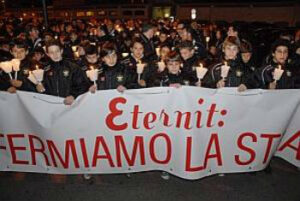
Ma qui si fa strada una riflessione. In modo speculare è vero anche che molte persone hanno realisticamente, e con assoluta certezza, respirato l’amianto che in quel decennio di attività si è diffuso a causa di condotte criminose o per non aver interrotto una produzione che i vertici dell’Eternit sapevano essere letale: molte persone, che pure non sono nominate tra le 392 del processo, si sono ammalate e morte, o sono adesso ammalate, e si ammaleranno negli anni a venire. Quanti uomini e donne (a cinquanta nuovi casi ogni anno, per diversi anni!), inconsapevoli e innocenti, hanno respirato l’amianto che ha ammorbato l’aria tra il 1976 e il 1986?
I loro nomi non sono nel capo d’imputazione e quindi processualmente ora non vengono addebitati a Stephan Schmidheiny. Ma, eticamente, Stephan Schmidheiny non potrà mai chiamarsene fuori e sentirsi innocente nei loro confronti. La polvere, tra il 1976 e il 1986, non era meno morbigena che prima o dopo quella gestione! E’ stata ugualmente letale. Quelle morti, se al momento non pesano nel procedimento penale, non possono non pesare sulla coscienza, agitare i pensieri, tormentare il sonno.
IL RISCATTO MORALE
L’unica possibilità di riscatto dalla scelleratezza e dall’orrore di questo flagello che continua a colpire persone innocenti, buone, innamorate della vita e dell’amore, e private di un avvenire, è di modificare la sorte futura, finanziando e guidando la ricerca di una cura. È l’unica via.
Faccio appello alla «giustizia riparativa». Ne ha parlato, di recente, anche Agnese Moro, a 45 anni dal ritrovamento del cadavere di suo padre, Aldo Moro, (9 maggio 1978), ucciso dalle Brigate Rosse.
La giustizia riparativa non ha a che fare con le transazioni proposte dai legali di Schmidheiny alle singole parti lese; né con quell’offerta (innominabile!) del 2011 avanzata alla municipalità casalese; e neppure con un eventuale risarcimento imposto dai giudici. Né è frutto di buonismo o di diluizione della memoria, e non è azzeramento del senso profondo di ingiustizia.
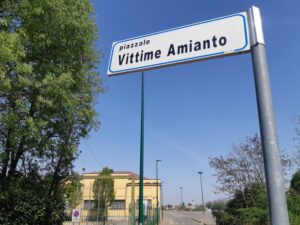
La giustizia riparativa non restituisce i morti (ingiustamente e incolpevolmente morti), non ripara gli strappi dello strascico sofferente, non colma il vuoto e l’assenza pesante (sia emotiva che pragmatica) che ha modificato e segnato chi è rimasto in vita.
Non gira pagina «per non pensarci più», ma si propone di scrivere un capitolo di rinascita.
Abbiamo bisogno di pacificazione, tutti: ne hanno bisogno le vittime (malati, morti, famigliari e amici) e ne ha bisogno chi è stato accusato di averle causate quelle vittime. E’ necessaria, ma, come scrissi in altre occasioni, qui mi ripeto: solo a un sincero e concreto ravvedimento può seguire un perdono.
Lucidamente, e umanamente, non vedo altra strada. La concretezza del pentimento sincero si configura nella terapia salvifica che solo un congruo conferimento di risorse può accelerare e ottenere, coordinato con rigore e interesse dallo stesso finanziatore.
Inoltre, ripeto quanto già scrissi precisamente il 15 marzo di un anno fa. A fronte di un rinnovato sollecito a un diretto coinvolgimento nella ricerca di una cura, Schmidheiny potrebbe domandare: «E io che cosa ne guadagno?», questa era ed è la risposta: «Guadagna sé stesso, signor Schmidheiny, senza la scorciatoia di una contropartita; guadagna la sua pace interiore che, in caso contrario, qualunque siano gli esiti dei processi (quello in corso e altri che potrebbero essere intentati) non avrà mai, finché vive. Perché si troverà sempre a fare i conti con i fantasmi di quelle persone che si sono ammalate comunque per le fibre di quel decennio 1976-1986 in cui lei era il capo assoluto dell’azienda. Ci sono state, ci sono e non si possono dimenticare. Ma c’è una occasione di riscatto».
La giustizia riparativa, indipendentemente da quel che deciderà la Corte d’Assise – che speriamo tenga conto legittimamente dei dubbi sollevati dalla difesa ma non di meno dei documenti e delle testimonianze prodotte dalla procura e delle parti civili – è il salto nobile a cui mi appello.
E, ancora, io sono parte lesa, ma non mi sono costituita parte civile per lasciare aperta una via di ravvedimento morale e umano: aspetto il suo passo, signor Schmidheiny, con la mente libera e con la mano tesa. E’ il momento atteso da anni.
NUOVI FRONTI DELLA RICERCA
Recentemente, il 24 maggio scorso, si è svolto a Torino, con molti collegamenti da remoto, un seminario in cui si è riassunto lo stato dell’arte su sorveglianza sanitaria e cura del mesotelioma. Epidemiologi e oncologi, che danni sono impegnati su questo fronte, hanno provato a rispondere alla domanda: a che punto è la ricerca?
Tra gli studi innovativi, citiamo quello che si concentra sul cosiddetto «microbioma intestinale».
Che cos’è? Il microbiota ha una funzione protettiva, agisce infatti da barriera selettiva contro la proliferazione dei batteri patogeni. In altre parole, controlla il nostro sistema immunitario ed è quindi in grado di influenzare il modo con cui un individuo reagisce a uno stimolo infiammatorio causato, ad esempio, da un tumore.
Sul microbiota (cioè sulla capacità di reagire a una infiammazione) si può intervenire modificando proprio questo tipo di reazione se risulta insufficiente o inadeguata.
Ed è qui che si concentra l’attenzione dei ricercatori.
L’obiettivo che si propongono – raffrontando le feci di persone sane, di esposti all’amianto e di malati di mesotelioma – è quello di verificare se e come sia possibile intervenire modificando, con trattamenti farmacologici, la reazione del microbiota allo sviluppo tumorale. Al seminario abbiamo sentito dire che questa è la strada del futuro. La nostra speranza è che sia un futuro molto prossimo.
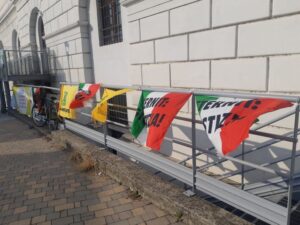
TRANSLATION by VICTORIA FRANZINETTI
June the 4th 2023
Preparing for the Eternit bis Verdict
By Silvana MOSSANO
Wednesday June the 7th, 2023 is a date that will go down in the history of the community of Casale, but also of the global community given the asbestos tragedy that still looms.
The Court of Assizes in Novara is expected to hand down the verdict in the Eternit bis trial, in which the defendant Stephan Schmidheiny is accused of the wilful murder, with possible malice (omicidio doloso) of 392 people who lived in Casale and the surrounding area and who died of asbestos-related diseases.
The verdict will mark the end of a trail of 41 hearings (the one on Wednesday is the 42nd hearing), over exactly two years, starting on June the 9th 2021.
What verdict can we expect?
It was a complex and delicate trial where epidemiology and medical science played key roles. Scientific studies and ideas entered the courtrooms and, over the years, pushed legal aspects towards somewhat opposing orientations. As a result we are not in a position to predict the outcome, but will try and illustrate the range of possibilities in the simplest way possible.
Let us imagine the three most likely scenarios, three scenarios, which may, however, not be so clear-cut, although there will be case specific decisions.
First case. The Court of Assizes accepts the PPs’ demand shared and supported by the plaintiffs (parties civiles) and find the defendant guilty of wilful murder. PPs Dr Gianfranco Colace and Dr Mariagiovanna Compare asked the Court of Assizes to find the defendant Stephan Schmidheiny guilty of the crime of multiple counts of murder with aggravated circumstances. The indictments call for life imprisonment, with daytime isolation. Solitary daytime confinement is a kind of ‘aggravated life imprisonment’: an additional penalty imposed on someone who has committed a crime for which life imprisonment is not considered enough. The Court could also award compensation (to be defined in separate civil cases) or immediately enforceable provisional measures in favour of the plaintiffs.
Second case. The Assize Court recognises the defendant’s responsibility but with no wilfulness (or malice). It therefore redefines the crime as wilful manslaughter (or culpable homicide with the aggravating circumstance of knowledge, as the Naples Court ruled for the Eternit deaths in the Eternit Bagnoli Plant. In this case, part of the 392 deaths would fall under the statute of limitations. The question is how many plaintiffs would retain the right to be compensated (based on the date of their death).
Third case. The court does not accept the prosecutors’ request, but that of the defence lawyers Astolfo Di Amato and Guido Carlo Alleva: ‘There was neither malice nor guilt in the defendant’s conduct. We ask that Mr Schmidheiny be acquitted because there is no case due to lack of evidence on the causal link. Alternatively, that he be acquitted because it is not a crime’ . The defence lawyers suggested acquittal for lack of evidence which the Code of Criminal Procedure, lists in Article 530 paragraph 2, and which the Court applies when they believe hearings have not proved responsibility beyond all reasonable doubt. In the event of this, the court acquits.
A summary of the possible verdicts ranging between guilt and innocence follows.
OBJECTIVE CERTAINTIES
Those of us who have listened to hours and hours of testimony and seen countless documents have some certainties.
1) Asbestos fibre causes mesothelioma. Research into a genetic predisposition established that, even when such predisposition exists in the person mesothelioma, does not develop without exposure to asbestos fibres and to genetic predisposition was not found in any of the 392 victims;
2) the defendant had known of the carcinogenic danger of asbestos ever since he had taken over the Eternit – where he was already operating because it was to wherethe Schmidheiny family had been involved in for decades: at the 1976 Neuss conference, Schmidheiny had clearly explained the situation to his top executives, causing them to be – in his words – shocked, but at the same time advising them not to panic, because the matter had to be managed in such a way as not to interrupt production;
3) For years with the help of communication experts, the defendant arranged and planned propaganda aimed at minimising, mystifying and concealing (from the workers, their families, trade unionists, politicians, journalists) the real dangers of asbestos of which he was aware;
4) at one point, the defendant had suggested replacing asbestos with other materials (and had hinted at this prospect to trade unions and local politicians, keeping them on tenterhooks for a long time), but, when the smaller competitors had not bought in because it was considered unprofitable, he himself had continued production as before, not to lose his own substantial slice of the Italian market;
5) having discontinued activity in 1986, and leaving the closed Casale plant exposed to the weather and time, the factory had exponentially increased its dangerousness: for years an open-air bomb, with slow and constant release of fibres, without protection, until the community took on the burden of the complex and costly reclamation at its own expense;
6) in addition to the factory, the following were left abandoned without reclamation:
- a) the former-Piemontese area where, for a long time, the open-air waste crushing activity had taken place, with a wide spread of fibres among the houses: the Eternit plant was exactly 1,276 metres from the cathedral, the heart of the city,
- b) the small beach on the River Po formed by the spillage of asbestos-polluted waste water,
- c) the landfill (also near the river), and
- d) the former warehouses in Piazza d’Armi (close to the city centre)
7) the mayors of Casale since 1986 to the present day have testified that they never received any offers to take charge of or contribute materially or financially to the clean-up operation from the defendant, or from any of his emissaries, and
8) neither local authorities nor the community of Casale and surrounding municipalities have ever been informed of the dangers of the improper use of materials such as dust and waste, nor of the need to remove or secure sites. On the contrary, Eternit constantly reassured about asbestos.
DOUBTS RAISED BY THE DEFENCE
So what arguments did the defence use to ask for the acquittal of their client? They raised doubts on the science underlying and informing accusations:
1st doubt: did all the 392 victims listed in the indictment (63 former workers of the plant and 329 members of the community who suffered due to environmental exposure) all fall ill and die of mesothelioma? For the prosecution and plaintiffs’ expert witnesses who examined the medical records, they were all mesothelioma cases? The defence expert witnesses, on the other hand, classed some as certain, others as only possible or probable. However, if they were not mesotheliomas (as diagnosed, at the time, by the treating oncologists and then confirmed by the PP’s and plaintiffs’ expert witnesses), then what disease did these victims die of? According to the defence expert witnesses, they could have been metastases of other unspecified tumours, which they neither investigated nor ascertained, but only supposed;
2nd doubt: even when there was a certain diagnosis of mesothelioma, how can one say that person breathed in asbestos fibres only in the period between 1976 and 1986, when Schmidheiny was Eternit’s manager? The very fraught debate concerns the moment when the disease was triggered in the body: according to the defence, associated, exclusively, with the first fibre exposures and the disputed role that subsequent exposures have on carcinogenesis, earlier onset and the shortening of life. For the defence expert witnesses, only the first exposure (or first exposures) count for the onset of the disease; for PP and plaintiff expert witnesses, on the other hand, additional doses also play an important role;
3rd doubt: was Eternit the only fibre source? The defence pointed out that, in Casale, asbestos was also present in other companies, or was used for so-called ‘improper uses’ in various areas of the city and surrounding towns (i.e. the dreaded powder as an insulating layer in the attics or as a levelling agent for playgrounds and courtyards, pieces of waste as road surfacing…). It should be duly pointed out, however, that only Eternit and none of the other Casale companies used asbestos as a raw material and, therefore, on a massive scale; and that it was from Eternit itself, and not from other companies, that the powder and waste pieces came for their improper uses.
Rather than putting forward precise alternative theses to those of the prosecution, the defence based their strategy on an enumeration of doubts (“it could be… one cannot rule out…”), aware that the judges will be faced with the enormous dilemma of arriving at a final conviction that transcends, precisely, every reasonable doubt.
THE VERDICT
In a day we will know what the decision of the court presided by Dr Gianfranco Pezone, with Dr Manuela Massino and the six members of the Jury.
The people of Casale remember the decision when, in 2014, the Court of Cassation quashed the sentence pronounced against Schmidheiny by the trial and appeals courts in the first Eternit One trial: they were told that law prevails over justice.
It is difficult to accept that the Law (however sacred) – can shake and destroy justice, the no less sacred legitimate yearning of those who suffered: harm as irretrievable as death, as terrible and heartbreaking as the loss of a loved one, as distressing and deep-rooted as the fear of falling ill that grips every inhabitant of this community.
Soo much for the context of the trial The verdict will not be judged: one respects them. We will know it in a day. And we will respect it, in the knowledge that, whatever the outcome, this trial is not the end, because other levels of judgement are possible on appeal.
THE ETHICAL VERDICT
Over and over again, we have said that the Eternit Bis trial period is limited to the 1976-1986 decade, when the Swiss entrepreneur headed and owned the company: in the criminal court the defendant must answer what happened in that time range. In other words, the court must decide whether those who fell ill and died of mesothelioma breathed in the fibres that were criminally released then.
Certainly many people breathed the asbestos fibres that spread during that decade of Eternit’s activity (due to the company’s criminal conduct or for not having interrupted production that Eternit’s top management knew to be lethal): many people, who are not named among the 392 in the trial, have fallen ill and died, or are now ill, and will develop the disease in years to come. How many unaware and innocent men and women (up to fifty new cases every year, for many years!) breathed the asbestos that polluted the air between 1976 and 1986?
Their names are not in the indictment and therefore, procedurally, they are not attributed to Stephan Schmidheiny. However, ethically, Stephan Schmidheiny cannot ignore them and state his innocence. The dust between 1976 and 1986 was no less dangerous than the one before or after that ùtime?]! It was just as lethal. Those deaths may not be discussed in the current criminal proceedings cannot but weigh on his conscience, haunting our sleep.
MORAL REDRESS
The only possible recovery from the wickedness and horror that continues to strike innocent, good people, in love with life and love, robbed of a future, is to change their future fates by financing and guiding the search for a cure. It is the only way.
I appeal to ‘restorative justice’. Agnese Moro also spoke about it recently, 45 years after the discovery of her father’s body, the former PM of Italy Aldo Moro, (9 May 1978), killed by the Red Brigades.
Restorative justice has nothing to do with the settlements proposed by Schmidheiny’s lawyers to individual injured parties; nor with that (unmentionable!) offer made in 2011 to the Casale municipality; neither with any compensation the Court might decide. Neither is it the result of being good or forgetting, nor will it cancel the deep sense of injustice. Restorative justice does not restore the dead – the blamelessly dead – , it fills neither the void nor the absence of the dead that has changed the lives of those who are still alive. It enables people to start afresh. We need appeasement, all of us: the victims (the sick, the dead, their families and friends) need it, and those who have been accused of causing those victims need it. we need it, but as I have written on other occasions: only sincere and concrete repentance can be followed by forgiveness. I see no other way. Sincere repentance is part of a therapy that only a generous contribution can accelerate and obtain, coordinated with rigour and interest by the donor himself.
Moreover, a year ago on March the 15th I wrote that a renewed call for a direct involvement in the search for a cure, Schmidheiny might ask what advantage he had, and the answer is: “You will find yourself, Mr Schmidheiny, without any quid pro quo; you will gain your inner peace that, otherwise, whatever the outcome of the trials (the one underway and others that might be brought) you will never have, as long as you live. Because he will always have to reckon with the ghosts of those people who developed the disease and died due to the fibres of that 1976-1986 decade when he was the absolute boss of the company. These people were, they are there and they cannot be forgotten. And this is an opportunity for redemption’. Regardless of what the Assize Court will decide – which we hope will legitimately take into account the doubts raised by the defence but no less the documents and testimony produced by the prosecution and the civil parties – restorative justice is the noble solution which I appeal to.
And, again, I am an injured party, but I am not a plaintiff as I decided to leave open a path to moral and human repentance open: I wait for you, Mr. Schmidheiny, to choose a path with a clear mind and an outstretched hand. It is the moment I have been waiting for years.
NEW RESEARCH
On May the 24th, a seminar was held in Turin, with many people following remotely, summarising the state of the art on health surveillance and mesothelioma treatment. Epidemiologists and oncologists, who are working on this front, tried to answer the question: what is the state of research? Innovative studies include one that focuses on the so-called ‘gut microbiome’. What is it? It is the collection of billions of microorganisms (bacteria, but also viruses, fungi and protozoa) that coexist in the human intestine without damaging it. The microbiota has a protective function, acting as a selective barrier against the proliferation of pathogenic bacteria. In other words, it controls our immune system and is therefore able to influence the way an individual reacts to an inflammatory stimulus caused, for example, by a tumour. The microbiota (i.e. the ability to react to an inflammation) can be affected by modifying precisely this type of reaction if it is insufficient or inadequate. And this is where the researchers’ attention is focused. A study is currently underway involving Dr. Federica Grosso, oncologist in charge of the Alessandria – Casale Mesothelioma Structure, and Laura Deborah Locati, professor of oncology at the University of Pavia and director of oncology at the Maugeri Research Institute in Pavia. Their aim – comparing the faeces of healthy people, those exposed to asbestos and mesothelioma patients – is to see if and how it is possible to intervene by modifying, with pharmacological treatments, the microbiota’s reaction to tumour development. At the seminar we heard that this may be the way of the future. Our hope is that it is a very near future.

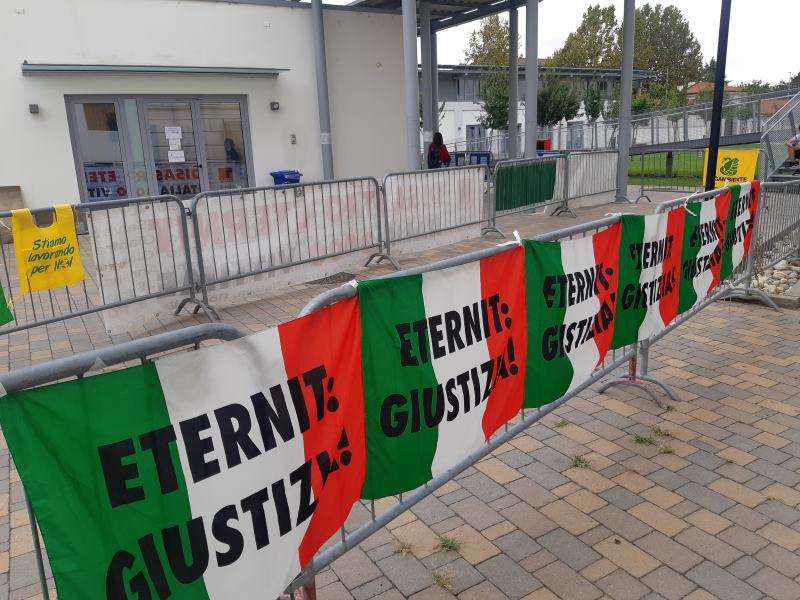
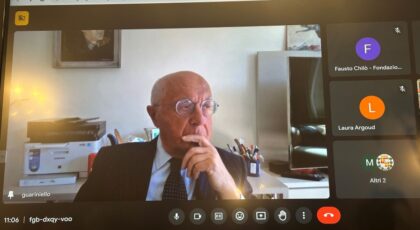
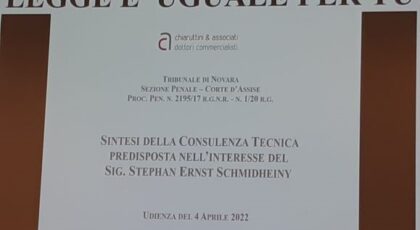
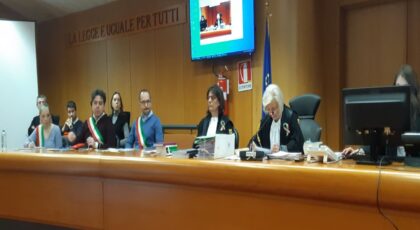
Brava! Brava Silvana!
Ancora un lavoro e un’analisi grandi, molto profonde e impegnative.
Grazie per questa tua costanza, molto preziosa per tutti e, ovviamente, per tutti noi che da decenni ci crediamo in questa lotta per affermare le risposte necessarie e sacrosante a questa immane tragedia, per appunto GIUSTIZIA, RICERCA, BONIFICA.
Grazie ancora una volta per la sintesi comprensibile a tutti.
Non ci resta che aspettare fiduciosi.
Sempre chiara esauriente e commovente. Purtroppo non ci sarò mercoledi, per problemi di salute, ma ci sarò con la mente e con il cuore. Un abbraccio a questa che è diventata una grande “famiglia” che non si piega, qualunque sia l’esito processuale.
Grazie Silvana per averci accompagnato lungo la dolorosa narrazione del processo Eternit. Auguriamoci che Giustizia sia Fatta!
Sei sempre una grande giornalista, divulgatrice generosa di testi sulla legalità e, permettimi, sull’etica e sulla morale. Per questo ti ho sempre stimata e ti stimo! Nelle tue parole non c’è mai acrimonia, voglia di vendetta ma soltanto amore. Per le vittime e, con l’invito alla responsabilità e alla bellezza del riconoscerla, anche verso chi si presume le abbia sulla coscienza.
Cara Silvana, la tua esposizione spazia su tutti gli aspetti che hanno caratterizzato questa lunga stagione giudiziaria. Lo fai con una narrazione priva di fronzoli, ma dalla quale emergono le varie posizioni giudiziarie, le aspettative, i dubbi….. Di una giustizia che non è certezza! Lo fai con pacatezza e lucidità! Mi colpisce molto la tua posizione sul concetto di giustizia riparativa, tu che hai perso un tuo caro. È, a mio modo di comprendere ( ed io ne sono sempre stato un fautore, non innamorato degli anni di galera che si comminano) la più saggia e umana posizione. Pensare che l imputato crei una Fondazione di ricerca sul mesotelioma e ne alimenti i costi, anche magari unendosi ad altri illustri responsabili utilizzatori dell amianto, rimane l unica luce da perseguire x coloro che si ammaleranno a Casale e in Italia. Grazie Silvana!